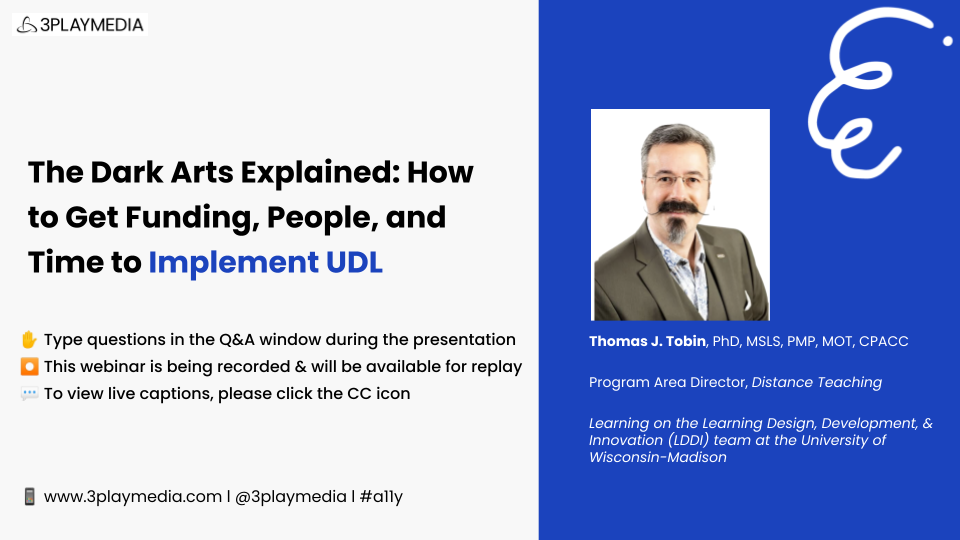The Dark Arts Explained: How to Get Funding, People, and Time to Implement UDL
The Dark Arts Explained: How to Get Funding, People, and Time to Implement UDL
How do you present UDL as a lasting positive practice for your institution, one that isn’t just the newest buzz-worthy practice that some vice president came back with after this year’s leadership conference?
As advocates for diversity, equity, and inclusion, we often adopt a number of practices and approaches that actually work against being taken seriously by the leadership teams in our organizations. While it is challenging to stop or re-frame such practices, you’ll see results almost immediately; we’ll look at three such practices, talk about why they aren’t as effective as you’d like them to be, and then we will practice the Dark Arts of re-framing them in ways that
attract budget lines, staff resources, and time for implementation efforts.
In addition, your tactical toolkit for UDL advocacy should also include audience-specific messaging. To put it simply, we should not talk to our C-suite leadership team in the same way that we do with our operations-level colleagues, and we should frame the needs and benefits of UDL differently, based on the audiences we serve. In this session, you’ll do some role-playing with a “secret script” for requesting money, staff, and time for a UDL implementation.
Our not-so-secret goal is to enable you to become “quiet evangelists” for UDL implementation. You will leave this session with:
- Three ways to re-frame and represent existing workaround access and accessibility
- Scripting for UDL advocacy to your president, CIO, and budget offices
- Language for framing pilot and small-scale efforts that help them to grow
- Two “dirty tricks” for talking to leadership (not all that dirty, and not really tricks, either)
Speaker
Thomas J. Tobin, PhD, MSLS, PMP, MOT, CPACC
Program Area Director l University of Wisconsin-Madison


